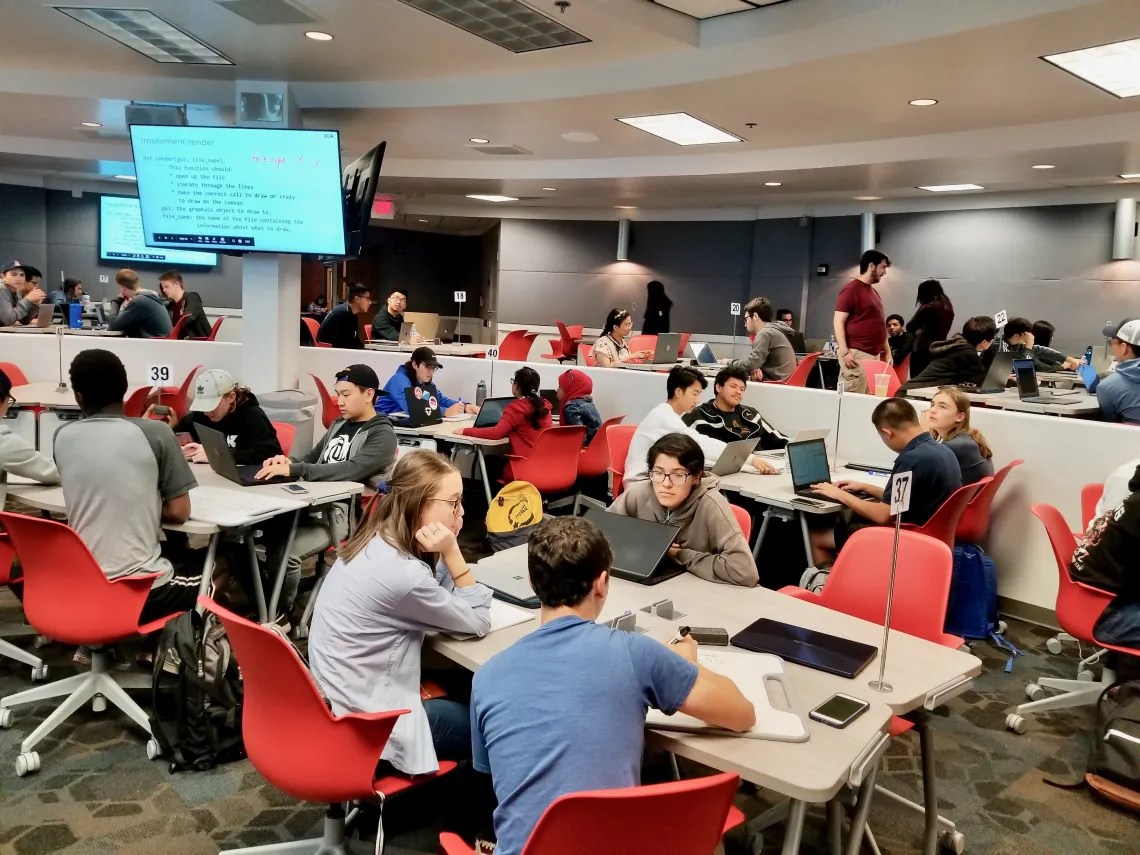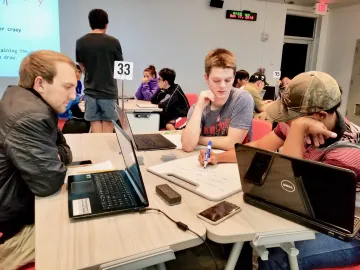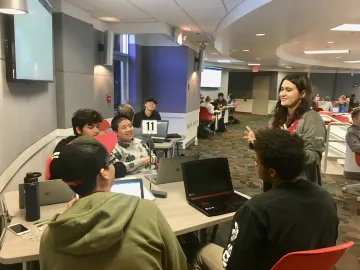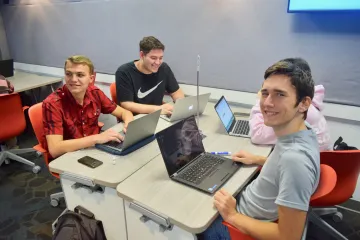Collaborative Learning in Computer Science

The University of Arizona has made huge strides in fostering collaborative learning by providing innovative learning spaces throughout the campus. With a commitment to developing a wide-variety of centrally-scheduled Collaborative Learning Spaces (CLSs), students are beginning to experience active learning strategies in the classroom.
The Department of Computer Science is committed to creating innovative learning environments. With a belief that engaging in active learning provides significant benefits and is critical to the success of our students, the computer science curriculum has undergone substantial modifications within the last year to provide opportunity for active learning. With plans to incorporate active learning in most Computer Science courses in the future, the department currently utilizes active learning in the following courses:
- CSC 110: Introduction to Computer Programming I
- CSC 120: Introduction to Computer Programming II
- CSC 210: Software Development
- CSC 252: Computer Organization
- CSC 337: Web Programming
Computer science instructor Benjamin Dicken is one of several CS faculty incorporating active learning in his classroom. In CSC 110 - Intro to Computer Programming I, class time is spent on a mix of short explanations of concepts, in-class activities, and follow-up on these activities. Multiple times per class meeting, students are given short activities to work on in their assigned groups. These activities allow time for the students to apply new concepts in-class, and potentially face their misunderstandings. If students have a misunderstanding, or just don't know how to get started, the teaching staff is available to help get them on the correct path or clear up uncertainty.

Students are also assigned to read sections from the book before most classes. Dicken states that this model, “allows me as the instructor to spend less time in-class explaining concepts, and allowing more time for students to practice applying what they are learning. When students are working on problems in class, I can gauge how well the students are doing. I am able to walk around the space and take a look at the responses students are coming up with.”

Dicken also emphasizes that when students work in groups, they are able to peer teach. A student who has a good grasp on a concept can help others in their group. In addition, students can learn how to work with others.

The changes made to teaching and learning quality has not gone unnoticed. Students have had a positive reaction to the new teaching style stating, “lectures were taught using short and informative slides, with time in between to practice the things being taught in the form of group activities. This helped me understand the material much better in comparison to some other computer science courses I have taken." Another student states, “I really enjoyed the layout of the classroom in the sense that we got the opportunity to discuss topics with our group and learn from each other."
Section leaders and teaching assistants have also noticed the benefits of the new style stating, “from observing and interacting with the students, I've seen a mixture of groups that seem to enjoy it, using the whiteboard to help visualize and share their thought process with their peers, while other groups seem to keep to themselves. Sometimes they need to just find the right people to collaborate with, so it helps when we change the groups every three weeks. I feel like it's successful when I see students become friends afterwards. I think it's especially beneficial for underrepresented students to find friends.”

Professor and interim department head, Dr. Michelle Strout states, “the key to active learning is having students confront what they have a shaky understanding of while in class where their group, teaching assistants, and instructor(s) are there to help them figure it out. Active learning was a little scary for me as an instructor at first, because it requires giving up some control in the classroom. However, the benefits are stunning. More students come to class even though we are not grading participation. More students participate in class by asking and answering questions. I saw some students high-fiving someone in their group last Thursday when they figured out something, so I hope it means students are strengthening their community. That by itself makes it worth it.”
Active learning is having such a positive impact on the CS student experience that the department is planning to create a large collaborative learning classroom in the Gould-Simpson building. Having this dedicated space for active learning will allow the department to expand active learning offerings and continue to support innovative teaching in computer science.

